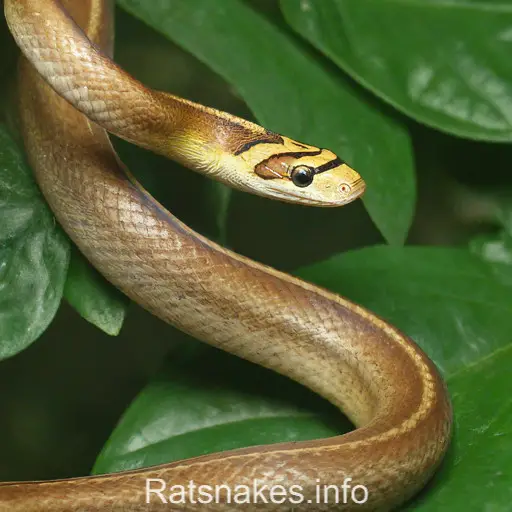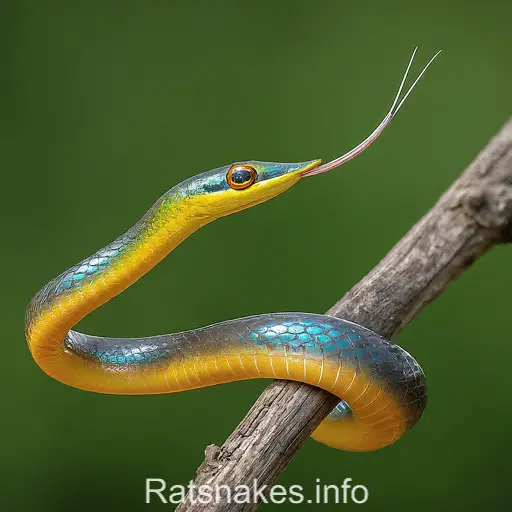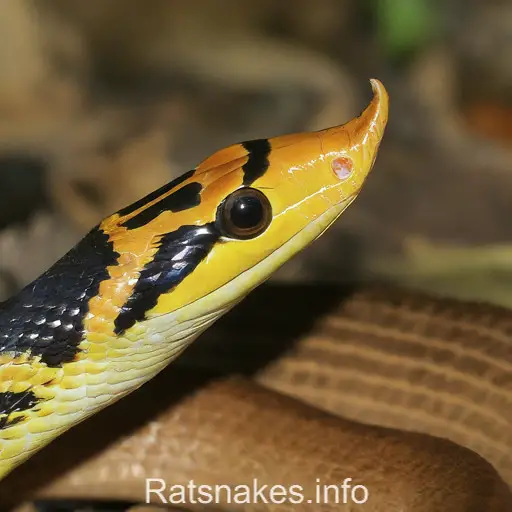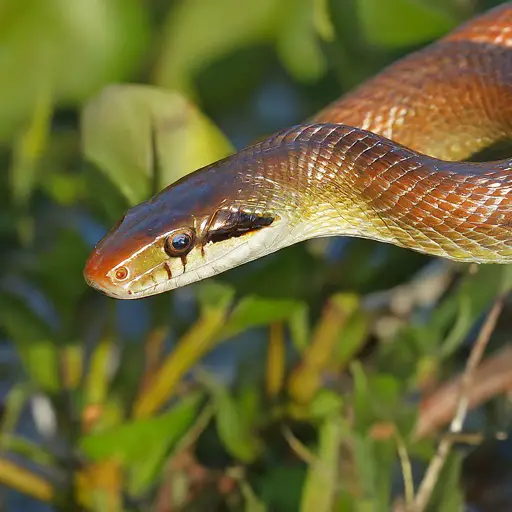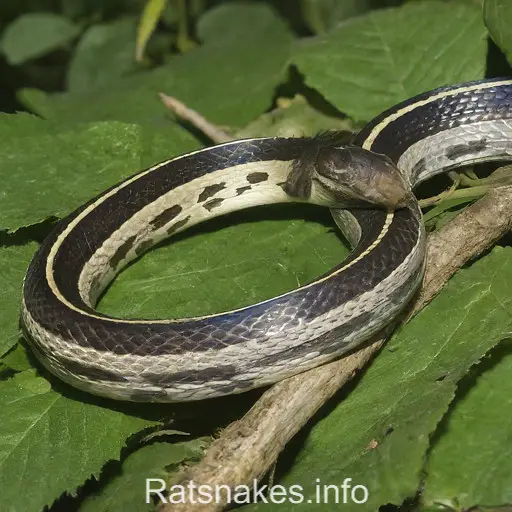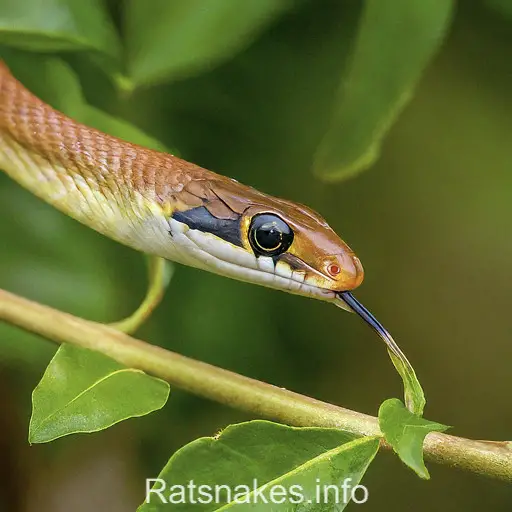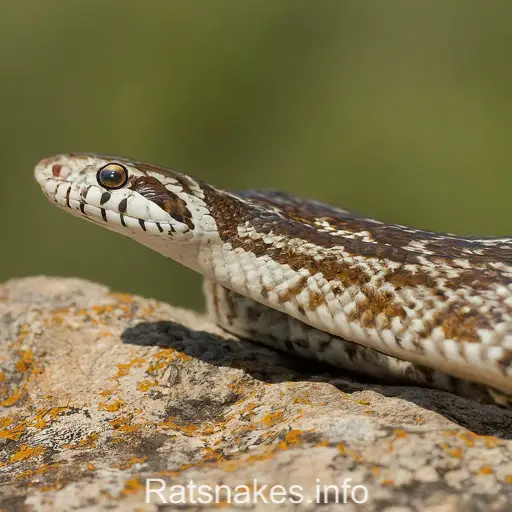
Welcome to our guide on the fascinating Steppe rat snake! We’ll explore the unique characteristics and behavior of this elusive reptile that inhabits the vast steppes of Central Asia.
Known for its slender body and distinct coloration, the Steppe rat snake is a sight to behold in its natural habitat. Join us as we delve into its diet, habitat, and the importance of conservation efforts to protect this species.
Whether you’re a seasoned herpetologist or simply intrigued by the wonders of the animal kingdom, our exploration of the Steppe rat snake promises to be an enlightening journey. Let’s uncover the secrets of this remarkable snake together.
Overview of the Steppe Rat Snake
The Steppe rat snake (Elaphe dione) is a unique reptile native to the vast steppes of Central Asia. With its slender body and distinct coloration, this snake is a fascinating specimen for herpetologists and wildlife enthusiasts alike.
- This species primarily feeds on rodents, making it an essential component of the ecosystem in its natural habitat.
- The Steppe rat snake is typically found in dry, grassy plains and rocky areas, where it can blend in seamlessly with its surroundings.
- Conservation efforts are crucial to protecting this species from habitat loss and other threats to its survival.
Exploring the world of the Steppe rat snake reveals the intricate balance of nature and the importance of preserving biodiversity in our ecosystems.
Physical Characteristics
When it comes to the Steppe rat snake’s physical appearance, there are some key features that make it stand out:
- Slender Body: The Steppe rat snake is known for its sleek and slender body, allowing it to navigate through various terrains with ease.
- Distinct Coloration: With its unique coloration of shades ranging from brown to olive green, the Steppe rat snake blends perfectly into its natural habitat, making it a master of camouflage.
- Length: These snakes typically grow to an average length of 2 to 3 feet, although some individuals may reach up to 4 feet.
- Scales: The Steppe rat snake’s scales are smooth and have a glossy appearance, contributing to its overall elegant look.
- Eyes: Sporting round pupils and keen eyesight, these snakes are adept at spotting prey and potential threats in their environment.
- Head Shape: Characterized by a distinct elongated head, the Steppe rat snake possesses sharp teeth to assist in capturing and consuming its prey.
Understanding the physical characteristics of the Steppe rat snake is crucial in appreciating its unique traits and its role within the ecosystem.
Behavior and Habitat
When it comes to the Steppe rat snake’s behavior and habitat, we find this reptile to be particularly intriguing. These snakes are primarily nocturnal, preferring to hunt and explore under the cover of darkness. With their agile bodies and excellent climbing skills, they can often be found scaling trees and rocky outcrops in search of prey.
In terms of habitat, Steppe rat snakes thrive in a variety of environments, including grasslands, scrublands, and rocky areas. They are well-adapted to arid climates and can withstand both high and low temperatures, making them incredibly versatile in their choice of living spaces.
One remarkable aspect of their behavior is their feeding habits. Steppe rat snakes are constrictors, meaning they subdue their prey by coiling around them and squeezing until they suffocate. Their diet primarily consists of small mammals, birds, and other reptiles, showcasing their role as top predators in their ecosystem.
Another interesting behavior exhibited by these snakes is their camouflage skills. Their coloring allows them to blend seamlessly into their surroundings, making them almost invisible to unsuspecting prey and predators alike. This clever adaptation not only aids in hunting but also serves as a defense mechanism against potential threats.
The Steppe rat snake’s behavior and habitat are key aspects of its survival and ecological role in its native Central Asian habitats. By understanding these characteristics, we gain a deeper appreciation for the unique abilities and adaptations of this fascinating reptile.
Diet and Feeding Habits
When it comes to Diet and Feeding Habits, Steppe rat snakes are carnivorous predators, showcasing their role as top predators in their ecosystem. These agile reptiles primarily feed on small mammals, birds, and other reptiles. Using their keen eyesight and excellent camouflage skills, they rely on ambush tactics to capture their prey effectively.
Steppe rat snakes are constrictors, using their bodies to suffocate and overpower their victims. Their ability to blend seamlessly into their surroundings gives them an advantage when hunting, allowing them to surprise their prey without being detected. This camouflage not only aids in hunting but also serves as a defense mechanism against potential threats in their environment.
Being primarily nocturnal hunters, Steppe rat snakes are most active during the night, using the cover of darkness to stalk and ambush their prey. Their agile bodies and climbing skills enable them to navigate various terrains with ease, whether they are hunting on the ground or climbing trees and rocky outcrops in search of food.
Steppe rat snakes play a crucial role in controlling small mammal populations in their habitat, helping to maintain the balance of their ecosystem. By preying on rodents and other small creatures, they contribute to the overall health of the ecosystem and demonstrate their importance as key predators in the food chain.
Understanding the Diet and Feeding Habits of Steppe rat snakes provides valuable insights into their behavior and ecological significance in Central Asian ecosystems. Their role as efficient predators highlights the delicate balance of nature and the essential role that each species plays in maintaining a healthy and harmonious environment.
Conservation Efforts
- Protected Areas: Steppe rat snakes are found in various protected areas across Central Asia, safeguarding their habitats from human encroachment and habitat destruction.
- Research and Monitoring: Ongoing research and monitoring projects help us understand the population trends, behavior, and ecological needs of Steppe rat snakes for effective conservation strategies.
- Community Engagement: Involving local communities in conservation efforts raises awareness about the importance of preserving these snakes and their habitats, fostering a sense of responsibility towards biodiversity conservation.
- Habitat Restoration: Restoring degraded habitats and creating corridors for Steppe rat snakes to move between suitable environments contributes to their long-term survival and genetic diversity.
- Anti-Poaching Measures: Implementing anti-poaching measures and enforcing strict regulations help combat illegal trade and hunting of Steppe rat snakes, safeguarding them from exploitation.
- Education and Outreach: Educational programs and outreach initiatives educate the public about the ecological role of Steppe rat snakes, promoting coexistence and respect for these unique reptiles.
- Collaborative Partnerships: Collaborating with governmental agencies, conservation organizations, and researchers strengthens conservation efforts and enhances the protection of Steppe rat snakes and their habitats.
| Aspects of Conservation Efforts | Data |
|---|---|
| Protected Areas | Various across Central Asia |
| Research and Monitoring | Ongoing projects for population trends and behavior |
| Community Engagement | Involving locals to raise awareness |
| Habitat Restoration | Creating corridors for snake movement |
| Anti-Poaching Measures | Combatting illegal trade and hunting |
| Education and Outreach | Promoting public awareness |
| Collaborative Partnerships | Working with agencies, organizations, and researchers |
Key Takeaways
- The Steppe rat snake, native to Central Asia, is known for its slender body, distinct coloration, and importance as a predator in its ecosystem.
- These snakes primarily feed on rodents, are adept at camouflage, and play a crucial role in controlling small mammal populations.
- Conservation efforts, such as protecting habitats, research, community engagement, habitat restoration, anti-poaching measures, education, and partnerships, are essential for safeguarding this species.
- Understanding the physical characteristics, behavior, and habitat of Steppe rat snakes is vital in appreciating their unique traits and ecological significance.
Conclusion
Steppe rat snakes are fascinating creatures with unique characteristics and vital roles in their ecosystem. Their hunting skills, camouflage abilities, and conservation efforts make them a valuable species worth protecting. By safeguarding their habitats, conducting research, engaging communities, and implementing conservation strategies, we can contribute to the long-term survival and genetic diversity of these snakes. It is crucial to continue our collaborative efforts with governmental agencies, conservation organizations, and the public to combat illegal trade, raise awareness, and enhance conservation initiatives. Together, we can ensure a sustainable future for Steppe rat snakes and promote biodiversity conservation in Central Asia.

